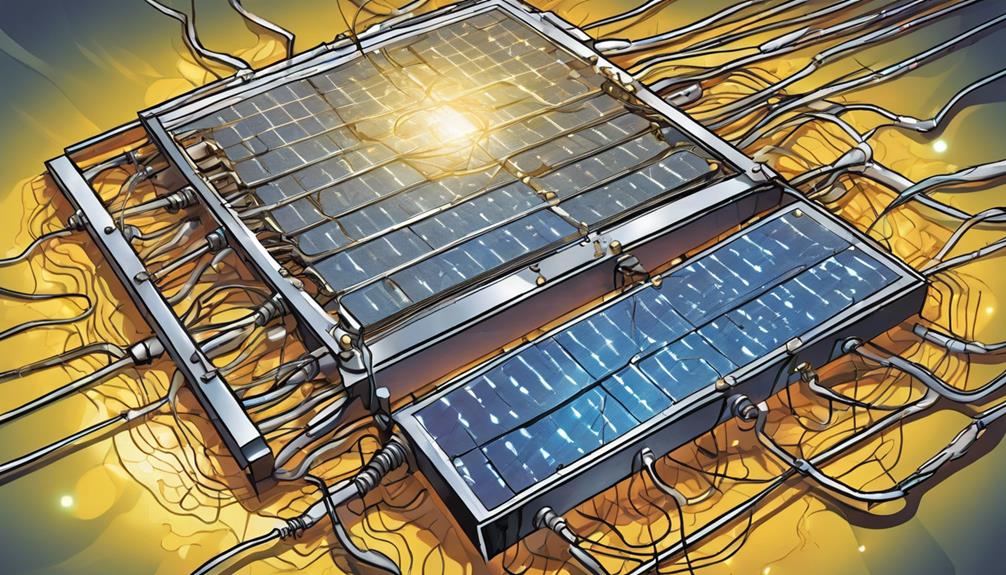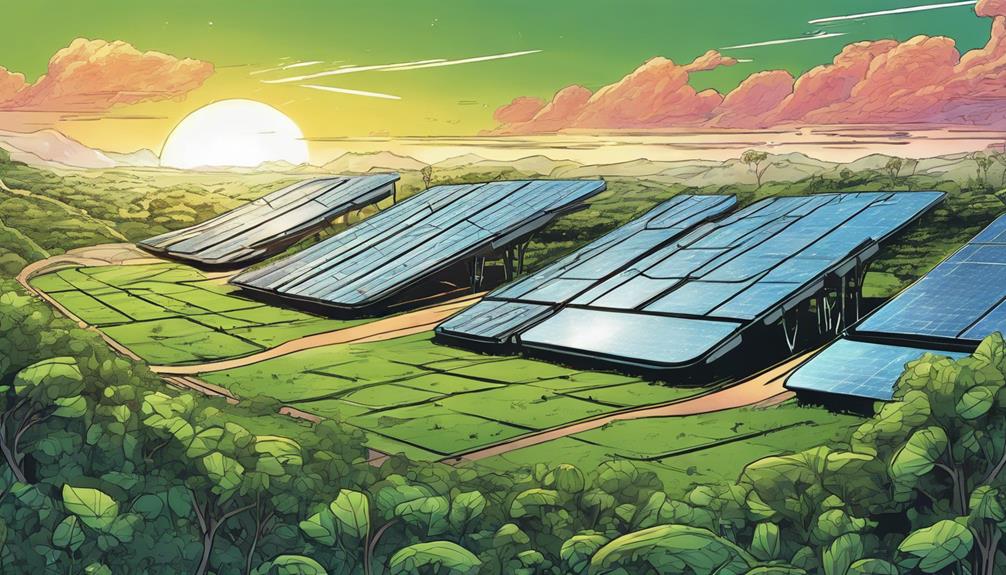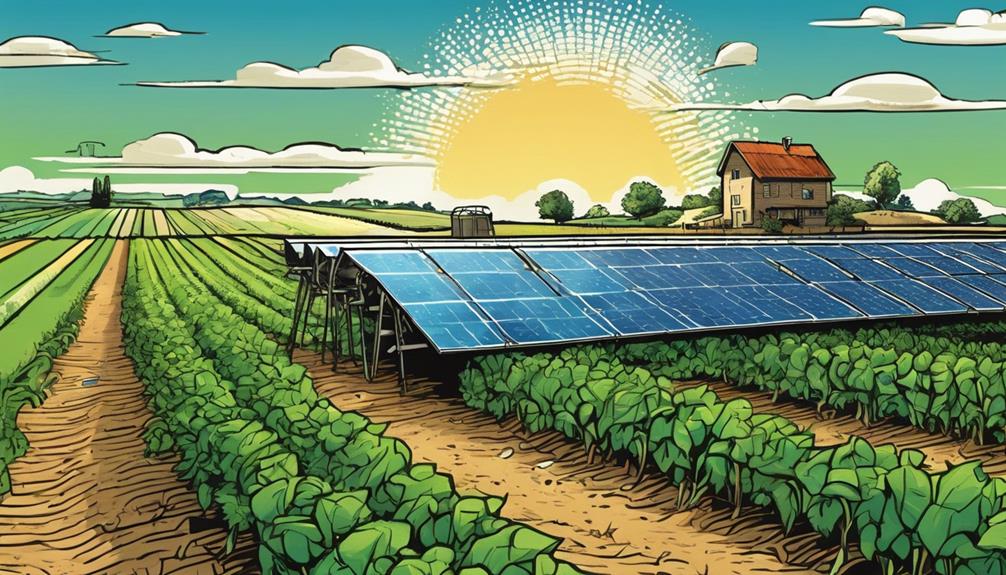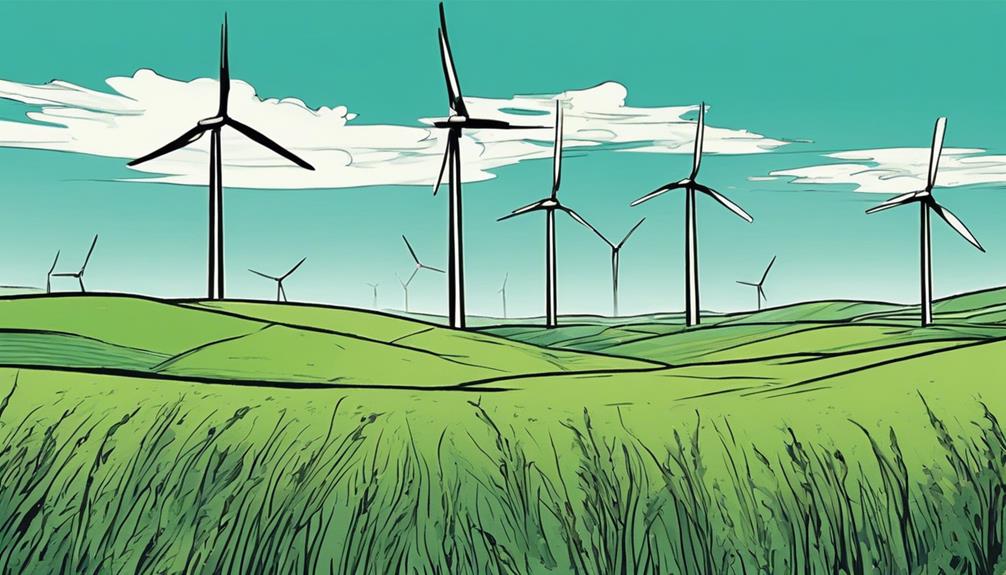We're on the cusp of a solar revolution As we face the challenges of climate change and energy insecurity, harnessing solar power has emerged as a beacon of hope. With the global solar market projected to reach 1 terawatt of installed capacity by 2023, we're paving the way for a sustainable energy future. We're tapping into the limitless energy of the sun to power our homes, businesses, and communities. From photovoltaic cells to concentrated solar power systems, we're deciphering the secrets of solar energy. And as we explore this clean, renewable power source, we're discovering a brighter future ahead – one that's full of promise and possibility.
Key Takeaways
- Solar energy is a clean, sustainable, and renewable power source, decreasing greenhouse gas emissions and promoting energy security.
- Photovoltaic technology converts sunlight into electricity, making it a viable option for residential and commercial applications.
- Concentrated Solar Power systems achieve high efficiency rates, store excess heat, and provide flexible power generation options for large-scale power plants.
- Solar energy creates jobs in the renewable energy sector, stimulates local economies, and contributes to a sustainable future.
- With advancements in technology, solar energy is becoming increasingly cost-competitive, making it a bright future ahead for the industry.
The Science of Solar Energy

Let's immerse ourselves in the fascinating world of solar energy by exploring how photons from sunlight interact with solar panels to generate electricity or heat.
We're talking about the fundamental process that makes solar power possible. When sunlight hits a solar panel, photons are absorbed by photovoltaic (PV) cells, exciting electrons that flow through the material. This flow of electrons is what we call electricity.
It's a remarkable process that's both renewable and sustainable. We can harness this energy to power our homes, businesses, and even entire communities. By understanding the science behind solar energy, we can better appreciate the potential of this clean and limitless resource.
Types of Solar Collection Systems

We're familiar with the basics of solar energy, but now let's explore the various ways we can collect and harness this power, investigating the different types of solar energy collection systems that make it possible.
There are several types of systems, each with its own unique benefits and applications. Photovoltaic (PV) systems convert sunlight directly into electricity, while Concentrated Solar Power (CSP) systems use mirrors or lenses to focus sunlight and generate heat.
Solar water heating systems and solar air heating systems use sunlight to heat water and air, respectively. Additionally, solar thermal systems generate electricity using heat from sunlight.
Each of these systems plays an essential role in harnessing the sun's energy, and we'll discuss further into their specifics in the sections to come.
Photovoltaic Technology Explained

By harnessing the energy of photons, photovoltaic (PV) technology empowers us to convert sunlight directly into electricity, making it an essential component of our clean energy future.
We're able to achieve this through the use of PV cells, which are made from semiconductor materials. When sunlight hits these cells, it sets electrons in motion, generating an electric current.
We connect multiple PV cells to form solar panels, which can be installed on rooftops or in solar farms. PV technology is widely used for residential and commercial applications, and its efficiency continues to improve as research and development advance.
As we move forward, we're excited to see the impact PV technology will have on our shift to a sustainable energy future.
Concentrated Solar Power Systems

In contrast to photovoltaic systems, concentrated solar power (CSP) systems harness sunlight by reflecting and focusing it onto a central point, generating heat that can be used to produce electricity on a larger scale. This technology allows us to tap into the sun's energy in a more efficient way, making it ideal for large-scale power plants.
Here are some key benefits of CSP systems:
- Higher efficiency rates: CSP systems can achieve efficiency rates of up to 40%, compared to PV systems which typically range from 15% to 20%.
- Thermal energy storage: CSP systems can store excess heat generated during the day for use during the night or on cloudy days.
- Flexible power generation: CSP systems can be designed to provide both electricity and heat, making them suitable for various applications.
- Scalability: CSP systems can be built to accommodate large-scale power generation, making them an attractive option for utility-scale power plants.
Solar Energy for a Sustainable Future

As our planet faces the challenges of climate change, solar energy emerges as a beacon of hope, offering a clean, sustainable, and renewable source of power that can significantly decrease our reliance on fossil fuels and mitigate the adverse effects of global warming.
We're witnessing a noteworthy shift towards solar energy, driven by its numerous benefits. Not only does it decrease greenhouse gas emissions, but it also contributes to energy security and independence. Additionally, solar energy creates jobs in the renewable energy sector, stimulating local economies.
Frequently Asked Questions
How Does Solar Energy Affect the Grid During Periods of Low Sunlight?
We recognize that during periods of low sunlight, solar energy output decreases, affecting the grid's overall power supply. To mitigate this, we rely on energy storage systems and grid management strategies to guarantee a stable supply.
Can Solar Panels Be Installed on Historic or Protected Buildings?
"We've seen it done successfully, like in the case of the historic Mount Stuart House in Wales, which installed solar panels while preserving its architectural integrity. Yes, solar panels can be installed on historic or protected buildings with careful planning and design."
What Is the Average Lifespan of a Commercial Solar Panel System?
We're curious about the average lifespan of a commercial solar panel system. Typically, these systems last around 25-30 years, depending on factors like quality, maintenance, and environmental conditions.
Are There Any Government Incentives for Residential Solar Installations?
"As we bask in the warmth of solar energy, we're thrilled to report that yes, there are government incentives for residential solar installations The federal solar investment tax credit (ITC) offers a 26% tax credit for qualified homeowners."
Can Solar Energy Be Used to Power Electric Vehicles Directly?
We can charge our electric vehicles directly with solar energy by installing solar panels and an electric vehicle charging station, allowing us to fuel our cars with clean, renewable energy.
How Does Real-time Monitoring Improve the Performance of Solar Power Systems?
Realtime solar power monitoring benefits include improved performance and efficiency of solar power systems. By providing immediate data on energy production, consumption, and potential issues, real-time monitoring allows for proactive and effective maintenance and optimization of solar panels. This results in higher overall output and cost savings for the system owner.
Conclusion
As we look ahead, we're optimistic about the role solar power will play in shaping a sustainable world.
Take, for instance, the town of Greensburg, Kansas, which has already shifted to 100% renewable energy, with solar power being a significant contributor.
Imagine a world where entire cities follow suit, harnessing the sun's energy to power homes, businesses, and transportation.
The possibilities are endless, and we're excited to be a part of this revolution.









